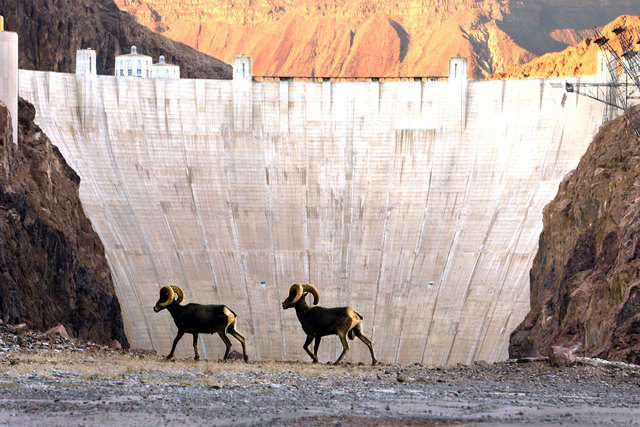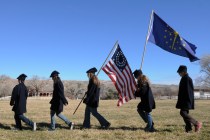Touring Hoover Dam is powerful experience
Hoover Dam, which turns 80 years old this year, is an engineering marvel that attracts nearly a million visitors annually to its location on the Colorado River just 30 miles from Las Vegas.
Completed in April 1935, two years ahead of schedule, the dam was built during the Great Depression, drawing job-hungry workers by the thousands. They faced harsh and dangerous conditions in a remote location while working on the huge federal project.
Originally called Boulder Dam, the structure changed the face of a multistate desert region in the West. The dam harnessed the power of the Colorado River to generate electricity and stored water in Lake Mead, creating a popular recreation area, supplying domestic and agricultural water to millions and controlling flooding downstream. Congress changed the name of the dam in 1947 to honor President Herbert Hoover’s early support of the project.
To reach Hoover Dam, follow U.S. Highway 93/95 from Las Vegas through Henderson. U.S. 95 heads south at Railroad Pass and U.S. 93 continues toward Arizona through Boulder City. At the second stoplight in Boulder City, turn left onto a U.S. 93 bypass that skirts the downtown area. Follow it toward the bridge across the river for 5 miles and then turn onto state Route 176, the 2-mile access road to the dam. The narrow road across the dam no longer carries through traffic into Arizona but accesses parking areas for overflow from the parking garage on the Nevada side, open daily from 8 a.m. to 5:15 p.m. Escalators and elevators access the nearby visitor center across the highway.
An elegant structure of concrete and steel, Hoover Dam sits wedged between the high, dark cliffs of Black Canyon. Contrasted against the blue-green water, its light-colored face dazzling in the desert sun, the beautiful dam appears frail despite its massive size.
Most visitors try to preserve their trip in photographs. Views of the lake side of the dam are good from the approach to the Spillway House, a multiuse building north of the crest of the dam on the Nevada side, and from parking areas on the Arizona side. The downstream side of the dam is best photographed from the air, from boats or rafts on the river or from near the highway bridge spanning the river south of the dam. For safety reasons, there are no views from the U.S. 93 bridge itself. To see the dam, travelers must exit the highway and stop at a viewing area near the bridge.
Tours of the dam began in 1937 and were an immediate success. Many millions of people have followed rangers into elevators that carried them down into the thrumming depths of the dam. It is not a journey enjoyed by people who suffer from claustrophobia. Warnings are posted for visitors who have pacemakers or other devices that might be affected by the huge generators. Since it is hot at the dam most of the year, wear light clothing and drink plenty of water. Leave pets at home.
Tickets for three kinds of tours are available online or in the lobby of the visitor center, which is open daily, except Thanksgiving and Christmas, from 9 a.m. to 5 p.m. The first tour explores exhibits in the visitor center and costs $10 for anyone older than age 3. The second, 30-minute tour takes in the power plant and includes access to the visitor center displays. Tickets cost $15 for people ages 17 to 61, $12 for seniors, military and youths ages 16 to 4. The third and longest tour spends an hour in the dam’s interior tunnels and power plant and includes visitor center access. Tickets for this tour cost $30 and are available only at the dam. Limited to 20 visitors ages 8 and older, this tour sells out fast. It is not suitable for some disabled visitors.
Margo Bartlett Pesek’s Trip of the Week column appears on Sundays.






















